Abstract 1. Multi-material three-dimensional printing cardiac microphysiological equipment (Instrumentedcardiacmicrophysiologicaldevicesviamultimaterialthree-dim...
1. Multi-material three-dimensional printing cardiac microphysiological equipment
(Instrumentedcardiac microphysiological devices via multimaterial three-dimensional printing)
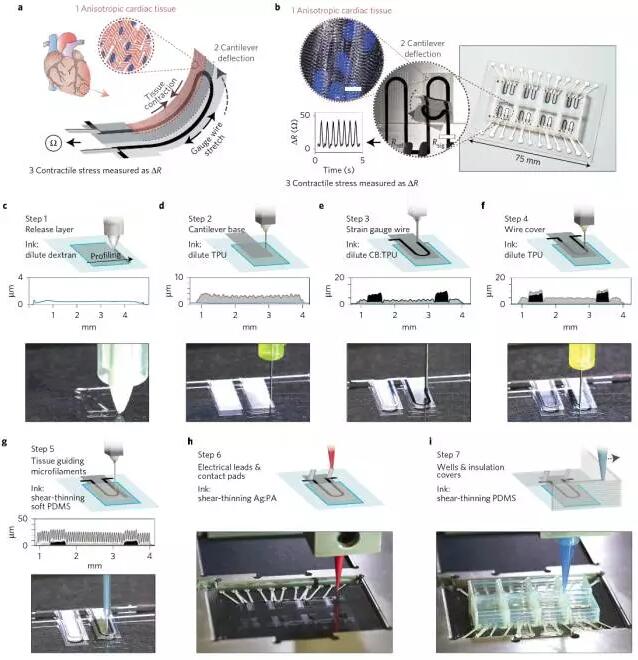
Biomedical research has relied on animal research and routine cell culture for decades. Recently, the microphysiological system (MPS), also known as the chip organ, has recreated the structure and function of natural tissues in vitro and has become a promising alternative. However, current MPS typically lacks integrated sensors and the fabrication process requires a multi-step lithography process. Johan U. Lind et al. introduced a simple approach to fabricating a new class of instrumented cardiac microphysiological devices through multi-material three-dimensional (3D) printing. Six functional inks based on piezoresistive, high conductance and biocompatible soft materials were designed to integrate soft strain measurement sensors into the microstructure to guide the self-assembly of the layered heart tissue. These embedded sensors provide non-invasive electronic readings of tissue shrinkage stress in a cell culture incubator environment. They further applied these devices to study drug reactions, as well as the development of contraction of human stem cell-derived laminar heart tissue for more than four weeks. (Nature Materials DOI: 10.1038/NMAT4782)
2. Long-term data storage in diamond
(Long-term data storage in diamond)
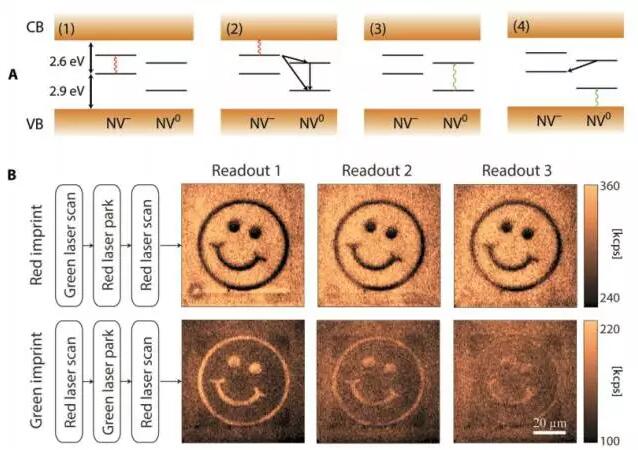
The negatively charged nitrogen vacancy (NV-) center in diamond is the focus of attention from quantum information processing to nanoscale measurement applications. So far, although most of the work has focused on the optical and spin properties of NV-, the control of charge state is expected to bring new opportunities. The idea of ​​introducing NV-rich type 1b diamonds proposed by Siddharth Dhomkar et al. is likely to achieve long-term storage of information. They used a multicolor optical microscope to perform read, write, and reset operations on any data set of two-dimensional binary bit density (equivalent to current digital video disc technology). Using a single kinetics of NV-ionization, they encode information without crosstalk on different planes of the diamond crystal, extending the memory capacity to three dimensions. In addition, Siddharth Dhomkar et al. correlated the central charge state with the nuclear spin polarization of the bulk nitrogen, indicating that the latter is robust to the NV ionization and recharge cycle. This combination of super-resolution microscopy provides a means for secondary diffraction NV charge control so that capacity can exceed existing technology. (Science Advances DOI: 10.1126/sciadv.1600911)
3. Self-powered textiles
(Self-powered textile for wearable electronics by hybridizingfiber-shaped nanogenerators, solar cells, and supercapacitors)

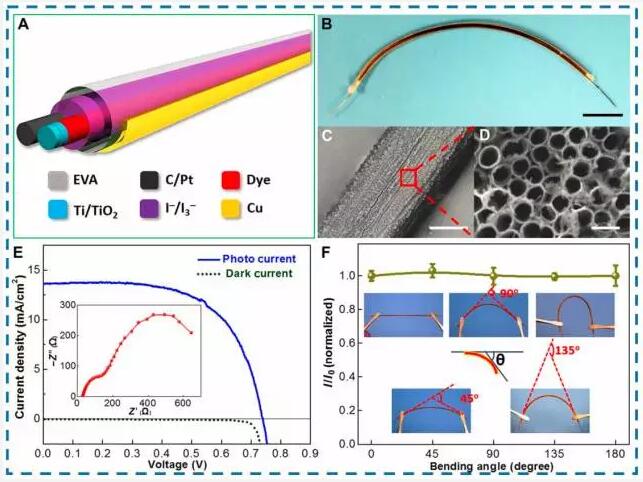
Wearable electronic devices on lightweight flexible substrates have great potential for use in portable devices, but their use is limited by battery life. Recently, Wang Zhonglin's research group proposed a hybrid self-charging power supply textile system, which aims to collect the energy of outdoor sunlight and random body motion at the same time, and then store them in the energy storage unit. By using fibrous dye-sensitized solar cells (for collecting solar energy) and fibrous triboelectric nanogenerators (for collecting random body motion energy), it is easy to harvest energy and convert it into electrical energy, and then further as a chemical Can be stored in fibrous supercapacitors. Because the entire system is fully fibrous, their proposed hybrid self-charging textile system can be easily woven into electronic textiles to create smart garments that enable continuous operation of mobile or wearable electronic products. (Science Advances DOI: 10.1126/sciadv.1600097)
Inter-layer electron-phonon coupling in 4.WSe2/hBN heterostructure
(Interlayer electron–phonon coupling in WSe2/hBNheterostructures)
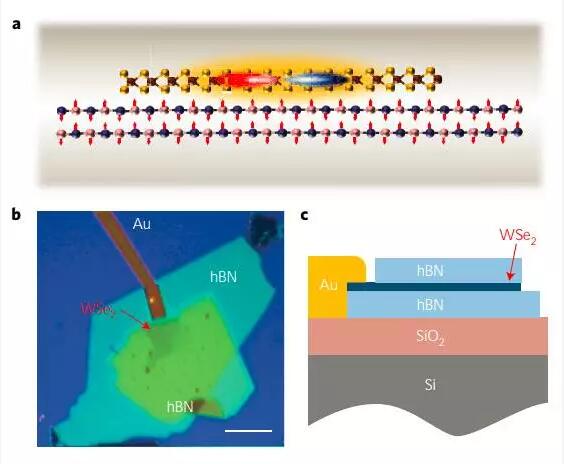
The tunable layer-to-layer interaction provides a powerful way to achieve novel and desirable quantum phenomena in van der Waals heterostructures. For example, the interaction of electrons and electrons between layers contributes to fascinating physical phenomena that are difficult to achieve in a single material, such as the Hofstadter butterfly in a graphene/boron nitride (hBN) heterostructure. In addition to the interaction between electrons and electrons, the interaction between the layers of electrons and phonons can further control the physical properties of the van der Waals heterostructure. Chenhao Jin et al. introduced the interaction of interlayer electrons and phonons in a WSe2/hBN heterostructure, in which optically silenced hBN phonons appear in Raman spectra with high intensity and are coupled to the electronic transition of WSe2 by resonance. . The excitation spectrum reveals the double resonance nature of this enhancement phenomenon and determines that the two resonance states are the A exciton transition of the single-layer WSe2 and the new mixed state existing only in the WSe2/hBN heterostructure. The study of interlayer electron and phonon interactions can open up new ways to design electrons and phonons for device applications. (NaturePhysics DOI: 10.1038/NPHYS3928)
5. Effective magnetic field derived from optically driven phonons
(An effective magnetic field from optically driven phonons)
The light field at the terahertz and mid-infrared frequencies can cause direct excitation of the collective mode in the condensed matter. For example, the excitation of the crystal lattice has been shown to excite insulator-metal transitions, metal magnetic sequences, or superconducting enhancements. Nova et al. summarize these ideas and explore the simultaneous excitation of multiple lattice modes with controllable relative phase drive. This nonlinear mode hybrid drives the rotation and displacement of the crystal field atoms, simulating the application of the magnetic field and causing the excitation of the spin precession in the rare earth iron oxide ErFeO3. In addition, coherent control of lattice rotation may be applicable to other interesting material research problems, for example as a way to influence the electronic phase topology. (Nature Physics DOI: 10.1038/NPHYS3925)
6. Hydrolysis of double CS2 carbon-sulfur bonds using multinuclear Pd(II) complexes at room temperature
(Hydrolyticcleavage of both CS2 carbon–sulfur bonds by multinuclear Pd(II) complexes at roomtemperature)
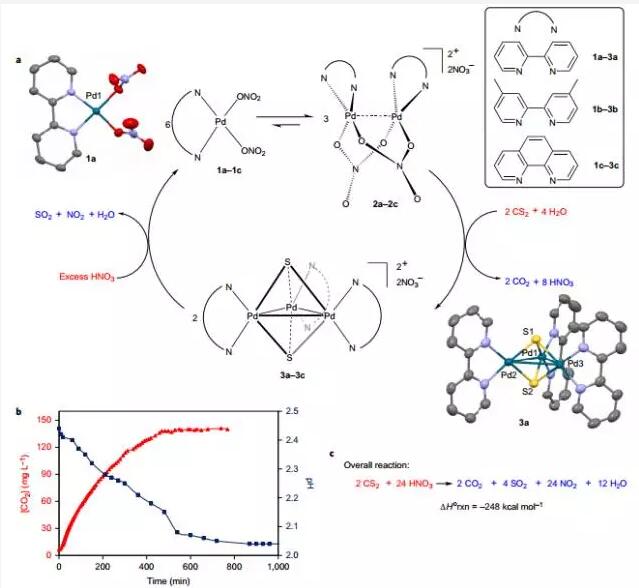
The development of homogeneous catalysts capable of converting CS2 and COS contaminants into environmentally friendly products is important for both basic and applied environmental sciences. Xuan-Feng Jiang et al. demonstrated a series of dimeric Pd complexes that are stable in air and can regulate the double CS2 carbon-sulfur bond to hydrolyze to produce carbon dioxide and trimeric Pd complexes at 25 °C. The dimeric starting complex is regenerated with a trimeric complex oxidized by HNO3, and SO2 and NO2 are released. It was confirmed by isotope labeling that the carbon and oxygen atoms of CO2 were derived from CS2 and H2O, respectively, and the reaction intermediates were observed by gas phase and electrospray ionization mass spectrometry and Fourier transform infrared spectroscopy. Xuan-Feng Jiang et al. also proposed a reasonable mechanism based on experimentally observed intermediates. This mechanism involves the intramolecular erosion of the nucleophilic Pd-OH moiety on the μ-OCS2 coordinating carbon atom. The μ-OCS2 cleaves a carbon-sulfur bond during deprotonation and simultaneously forms a carbon-oxygen bond. . The coupled carbon-sulfur bond cleaves and releases CO2 to produce [(bpy)3Pd3(μ3-S) 2](NO3)2 (bpy, 2,2'-bipyridyl) to provide a thermodynamic driving force for the reaction. (Nature Chemistry DOI: 10.1038/NCHEM.2637)
7. Nanoscale thermal imaging of energy dissipation in quantum systems
(Nanoscale thermal imaging of dissipation in quantum systems)

Energy dissipation is the fundamental process that dominates the dynamics of physics, chemistry, and biological systems. It is also one of the main features distinguishing between quantum and classical phenomena. Especially in condensed matter physics, the scattering mechanism, the loss of quantum information or the destruction of topological protection are deeply rooted in the complex details of the way and location of dissipation. However, because energy dissipation is not easily measured on the order of micrometers, the microscopic behavior of the system is usually not determined by dissipation. Despite the recent great attention paid to nanoscale temperature measurement, existing thermal imaging methods are still not sensitive enough for quantum system research and are not suitable for the required low temperature operation. D. Halbertal et al. introduced a nanometer thermometer based on a superconducting quantum interference device with a diameter of less than 50 nanometers at the apex of a sharp pipette: it can provide low temperature scanning thermal detection with less than 1 μHz-1/2 More than four orders of magnitude sensitivity of previous devices. This non-contact, non-invasive temperature measurement thermally detects 40 mW of nanoscale energy dissipation down to the Landauer limit and can be used to continuously read a single qubit at 1 GHz in 4.2 Kelvin. This research advancement makes it possible to observe the dissipation variation caused by single-electron charging of a single quantum dot in a carbon nanotube, and also reveals the loss caused by the resonance localization state of graphene encapsulated in hexagonal boron nitride. The dispersion mechanism opens the door to direct thermal imaging of nanoscale dissipative processes in quantum matter. (Nature DOI: 10.1038/nature19843)
8. DNA molecular hybridization driven film deformation
(Shape changing thin films powered by DNA hybridization)

Active materials capable of responding to physical and chemical stimuli can be used to construct micro-powered machines at the junction of biological and artificial devices. In principle, specific hybridizations to DNA can be used to form libraries of independent chemically-driven actuators, and can produce device performance that is not achievable based on polymer or metal layer methods. Shim et al. describe a deformation film driven by a DNA strand exchange reaction that can respond differently to different chemical signals. This film is formed by grafting gold nanoparticles by a layer-by-layer deposition process. The film consisting of the active layer and the inert layer exhibits a fast, reversible curl response to the stimulator-DNA strand added to the solution. Finally, a thin film composed of two independently addressable active layers exhibits a complex set of repeatable transform combinations involving eight mechanochemical states and self-correcting behavior. (Nature Nanotechnology DOI: 10.1038/NNANO.2016.192)
R404A is an HFC blend that is widely used
in low and medium temperature refrigeration applications, such as those used in
commercial refrigeration. Whilst it has become the widely accepted alternative
to CFC R502, R404A is coming under greater scrutiny due to its high Global
Warming Potential, leading to an increased focus on lower GWP alternatives such
as R407C, R417A and R422D.
R404A Refrigerant Gas
High Quality R404A Gas,Mixed Refrigerant Gas R410A,R404A Refrigerant,Blend Refrigerant Gas R404A
ZHEJIANG ZHONGLAN REFRIGERATION TECHNOLOGY CO.,LTD , https://www.uiszl.com








